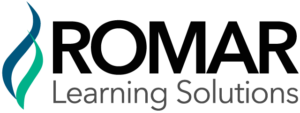
One of the challenges of coaching in the workplace is establishing a coaching routine. The coaching process involves creating a framework for how a manager routinely approaches the development of team members through the application of good coaching skills. While coaching skills are the “what” of a team member’s development, the coaching process is “how” to accomplish that development. The Five A’s—Assessment, Agreement, Action Planning, Analysis, and Acknowledgment—are an effective way to integrate coaching into a manager’s work routine. Let’s examine each phase in detail.
Assessment
Good coaching begins with an in-depth assessment by the manager and the team member to determine what the team member is doing well and opportunities for improvement. The manager and team member completing this assessment together allows the manager and team member to determine whether they align on the team member’s performance and areas for improvement. This should be a two-way discussion with both people candidly sharing their insights about the team member’s strengths and opportunities for improvement. This assessment needs to be unbiased and based on evidence such as observations, competencies, and key metrics that define the team member’s role.
Agreement
After completing a comprehensive assessment and aligning on the findings, the manager and team member need to agree on a reasonable, relevant, specific coaching objective that will help the team member be more effective in the role. This agreement is crucial because the team member’s agreement to the coaching objective serves as a commitment to perform the work toward achieving the objective, which may be challenging and require the team member to change.
The manager should play the role of facilitator when gaining agreement on a coaching objective. If the team member is experienced and has been performing the role for some time, the manager should ask good discovery questions about the assessment outcomes to help the team member self-identify the coaching need. But if the team member is new to the role, the manager may need to be more directive.
Action Planning
This is the planning phase of coaching where the manager and the team member map out how the team member will accomplish the coaching objective. When learning new knowledge, skills, or behaviors, whoever is doing the work is doing the learning. Therefore, the team member needs to be actively involved in the development. Simply telling a team member how to do something usually doesn’t result in much development. The team member needs to try the new knowledge, skills, or behaviors in a safe, realistic situation to truly master it.
A good action plan builds sequentially until the team member achieves the coaching objective. Each step in the process should be action oriented, meaning it requires some type of work, it should be measurable, and should have a time frame for completion associated with it.
Analysis
As the team member is performing the work defined in the development action plan, the manager should be analyzing progress. The team member also should be doing this, but the manager’s role is to objectively judge what is going well and what could improve and determine whether the team member’s action plan requires update or modification. The manager should base this analysis on the agreed-upon expectation of what the team member needs to accomplish according to the development plan. The manager and the team member must align on what good looks and sounds like at the beginning of the coaching process for an effective analysis to occur. Hard evidence, such as data and observation of behaviors, should form the foundation of the analysis.
Acknowledgment
The natural result of the action plan implementation and the analysis should be acknowledgment of the progress, or the lack thereof, by the team member. Acknowledging improvement and efforts goes a long way toward building positive momentum in the team member’s development. Good coaching is more than simply acknowledging the result of the development. A manager should also recognize the application of the new knowledge, skills, or behaviors so the team member knows what specifically has improved or failed to improve. The manager should always base effective feedback, like analysis, on evidence that focuses on the knowledge, skills, or behaviors, not on the team member personally.
In-Person and Virtual Coaching
Can the manager apply the Five A’s of coaching in a virtual work setting from a distance? Absolutely! The Five A’s work just as effectively whether you are coaching in person or remotely. The one challenge of applying the Five A’s from a distance is that the manager may have to work harder to gather evidence of the team member’s progress in the Analysis phase, especially if the team member is developing a new behavior or skill. The manager may not be able to observe the team member apply the new skill or behavior in a realistic on-the-job setting. This is when good discovery questions that encourage the team member to share what specifically happened are vital to the coaching process.
Summary: Integrating Coaching into Your Management Routine
The Five A’s provide a manager with an effective process for integrating coaching into the daily management role. The process begins with the manager and team member assessing the team member’s performance to uncover strengths and opportunities, then agreeing on a specific coaching objective, followed by the creation of an action plan. While the team member is implementing the action plan, the manager needs to carefully and objectively analyze the performance to look for progress. Then the manager should acknowledge any improvement or opportunities to course correct with good evidence-based feedback. This process works well in both in-person and virtual settings.




